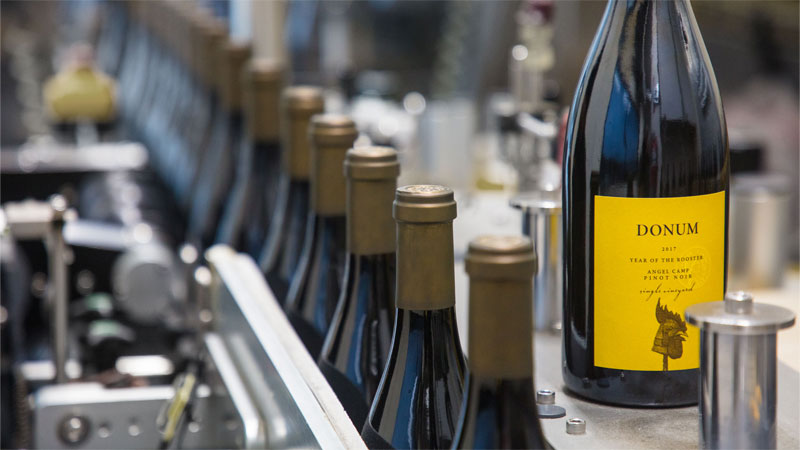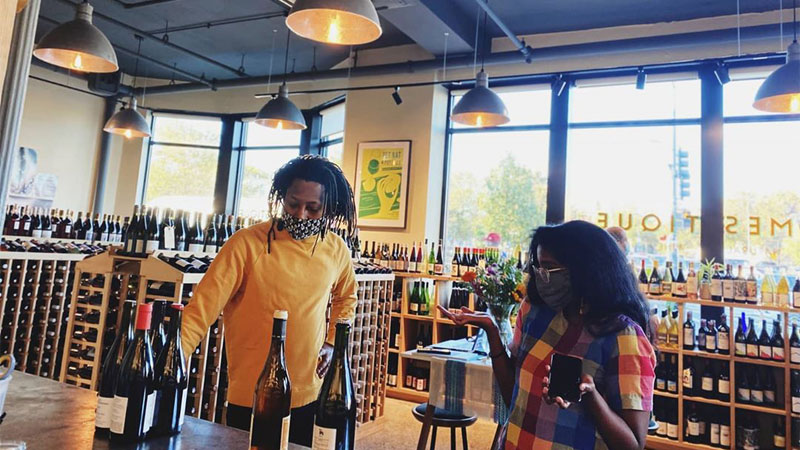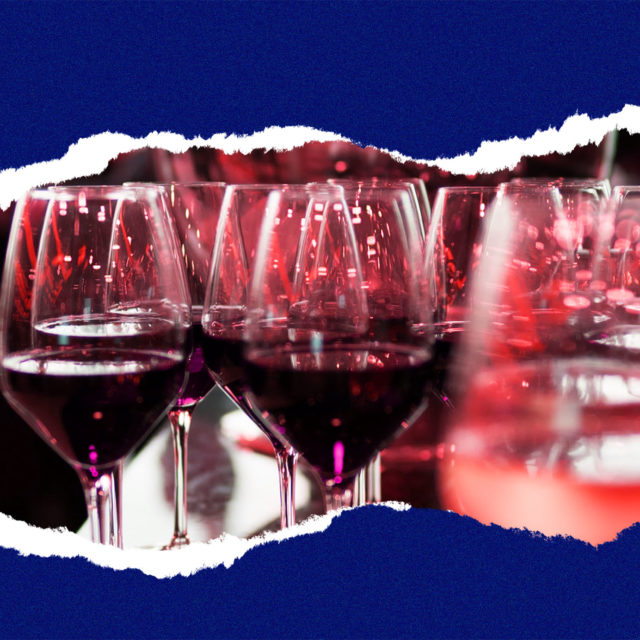With travel plans canceled, extravagant dinners out limited, and the need for a new fall wardrobe negated by continued work-from-home policies, many consumers are increasing their wine budgets. While some are simply stocking up more often, others are deciding to splurge, trading up for the ultra-premium, $30-plus options they once would have balked at.
And while some retailers, wholesalers, and wineries report strong premium wine sales even amid the effects of Covid-19, the wins have been uneven — even within a single portfolio. A premium wine’s online placements or direct-to-consumer (DTC) availability, its dependency on restaurant sales, and its value perception among consumers can all dictate whether it thrives or languishes in today’s consumer market. So how can the wine trade successfully sell premium wines — and what’s going to happen to these high-end bottles in the future?
Enjoying Affordable Luxuries
Initially, the data for premium wine sales seems promising. According to Nielsen, the $25-plus price tier for table wines across off-premise channels grew 15.5 percent year-over-year for the 52 weeks ending Aug. 8, and Wine.com reported an estimated 150 percent volume growth year-over-year for $30-plus wines in the six months after the pandemic hit in March.
Many have suggested that the shift from on-premise purchases to off-premise purchases has been a key driver for the uptick in higher-priced wines. “Since consumers are dining out less or not at all, [they are] willing to spend more for a nice bottle of wine at home,” says Adam Sager, the co-president of Winesellers, Ltd., which saw a 10 percent growth in sales at the $40 to $150 price points amid the effects of Covid.
Addie Wallace, the director of new business strategy and insights for Wine.com, echoes these findings. “[Consumers] are purchasing more expensive bottles to differentiate their Saturday date nights from their more casual Tuesday meals,” she says. And because retail markups are significantly lower than those at restaurants, Americans are also getting more bang for their buck. “We see that the typical monthly wine budget when dining at home can stretch a lot further than when dining out,” says Rupert Symington, the CEO of Symington Family Estates, who has noticed better performance for the $20 to $30 bracket than for the company’s higher-end wines.
With other luxuries, like travel, dining out, and hosting large events put on hold, consumers are also looking for ways to splurge — particularly when they have an excess of discretionary income. “People feel like in the midst of this uncertainty, being able to treat themselves helps,” says Jen Locke, the CEO of Crimson Wine Group, who has noticed uneven effects across the group’s ultra-premium wines.
But it’s also important to note that the pandemic’s financial burden has largely fallen on those with fewer resources in the first place, rather than those who were likely previously allocating large budgets to wine. “The economic impact for people who could previously afford above-$30 wine hasn’t been felt yet,” adds Locke. “We haven’t even begun to understand what the impact on that segment will look like.”

Recognizing Limiting Factors
However, those gains were outpaced by sales of lower-priced wines: During the aforementioned time periods, Nielsen measured strongest sales growth among wines priced between $20 and $24.99, and Wine.com sales of wines under $30 grew an estimated 300 percent year-over-year. The alcohol delivery platform Drizly only noted a marked year-over-year increase in share of wines priced $10 to $29.99 and a slight increase in wines priced $60 to $79.99; share of wines priced $30 to $49.99 diminished.
“Price per bottle average has slightly decreased since April as consumers started facing financial hardship and uncertainty in general,” says Matteo Boffo, an Italian fine wine specialist at Frederick Wildman. While many retailers and wholesalers noticed consumers splurging on both quantity and price point of wines as the pandemic and subsequent lockdowns first set in, the “stock-up” mentality did ease in the following months.
This has been exacerbated by the extended shutdown and slow reopening of restaurants across the U.S. “On-premise accounts were the main driver of high-end wines sales before the pandemic,” adds Boffo. “Off-premise has not compensated for it, as consumers are now leaning towards better value wines.”
These two factors — value perception and on-premise reliance — are important factors for a premium wine’s success during the pandemic, though there are myriad others. “It depends on the category, country of origin, and which channel the wine was sold prior to Covid,” says Sager. For instance, Winesellers has seen an 18 percent increase in its Argentinian Zuccardi wines priced at $30 and up, but categories like port and Champagne at the same price point are not selling well. These categories are no doubt impacted by the lack of large-scale celebrations and events in the wake of Covid, but both are also very dependent on restaurant sales.
Even though consumers are more willing to trade up on wines, they are still looking for value, especially in the face of a precarious economic climate. High-end wines from regions, grapes, or wineries that are perceived to over-deliver on their price have a leg up, while wines that have recently been pushed into higher price tiers due to tariffs may suffer.
“Argentina has always benefited from a quality-price perception,” says Sager, “and even more so now since price points have been steady compared to European price increases due to currency and tariffs.”
E-Commerce Goes Premium
As it has for wines of all prices, e-commerce has become an essential channel for premium wines during the pandemic. “The pandemic has brought more high-end consumers online for the first time, driving growth in that segment,” says Wallace.
Part of this dramatic growth is relative; because wine e-commerce is newer than the traditional, brick-and-mortar off-premise channel, it comprised a smaller portion of overall sales prior to the pandemic. “E-commerce is growing at a faster clip,” says Sager. “It was a smaller base, though, and still is compared to grocery and independent retail.”
However, the new, low-contact consumer habits formed by Covid have also boosted growth for online sales of premium wine. “More consumers are ordering wine online and willing to spend more for the convenience and avoidance of going to stores,” says Sager. Discovering the convenience of wine delivery has been a major reason behind Wine.com’s success during the pandemic as well, says Wallace.
The growth of e-commerce has helped to boost sales of premium wines that are readily available at online retailers because consumers have greater access to them. “On the higher end, customers [can find] the special bottles they thought were only available on restaurant lists or in specialty stores,” says Wallace.
For American wineries, DTC e-commerce sales have not only grown, they’ve become essential, particularly when wineries have been closed to the public. Consumers are purchasing more wine from wineries than ever. “Our sales are up considerably this year over last year at the same time,” says Angelica de Vere-Mabray, the CEO of Donum Estate, which sells its $30-plus wines almost entirely directly to consumers.
“This may be caused by the wineries themselves promoting direct sales and also by consumers’ desire to support wineries without going through a middleman,” says Boffo.
However, wineries that did not already have e-commerce capabilities set up were at a disadvantage. “While e-commerce seems like a basic functionality for wineries, it hasn’t been,” says de Vere-Mabray. “Covid has forced wineries to embrace this channel and build these infrastructures.” Though most wineries have embraced e-commerce sales in the wake of diminished wine tourism and dwindling on-premise sales, those who didn’t already have an online sales base in place have not seen as much success — especially for premium wines.

Strategies for Premium Sales
Faced with a challenging climate for premium wines sales, wholesalers, wineries, and retailers have gotten creative with their sales strategies. Winesellers has turned to data analytics software platform Emetry, which classifies accounts into different categories based on how often and how much they buy, and how likely they are going to stay committed to buying. “This helps us target engaged buyers and work with accounts committed or ready to commit to working more with Winesellers,” says Sager.
Particularly with the uptick in e-commerce sales, websites like Wine-Searcher.com offer useful information about new placement opportunities for premium wines. Winesellers has found success targeting new retailers by monitoring which ones are selling competing brands.
Retailers themselves have found new opportunities for consumer engagement, which has led to stronger premium wine sales. Wine.com has seen an uptick in virtual tasting views and ratings on its app since March, which indicates that consumers are looking to learn more about wines and engage with new brands. “Like any category, when the consumer is leaned in they tend to buy more and at higher price points,” says Wallace.
While some retailers are taking a high-tech approach, Domestique Wine in Washington, D.C., is focusing on safe, one-on-one interaction through appointment-based shopping. This allows the team to build trust with shoppers, making them more open to suggestions of higher-priced wines. “We want to remind people that little luxuries at this time are not only needed, but deserved,” says Eric Moorer, the director of sales and engagement for Domestique.
Though the reopening of the on-premise sector has been a positive turn in the course of the pandemic, it’s not an overnight solution for wines that were previously fixtures in restaurants. Beverage budgets are small, and wine directors have been forced to cut back their programs. “Until the lockdown began, most consumers were accustomed to buying much of their premium wines as part of restaurant meals enjoyed inside the restaurant,” says Gregory Doody, president and CEO of Vineyard Brands. “As the restaurant dining scene has changed so dramatically … wine lists have changed to adapt to the new scene, meaning many of their previous premium selections have been replaced by more value-oriented options.”
Sager still feels strongly about the potential for ultra-premium and luxury wines, and the company has recently launched two high-end wines from Zuccardi in the U.S. market (a gift pack retailing $250 and the “Finca Piedra Infinita” 2016, which retails for $150). “We have sold a total of 900 cases between the two,” he says, “so there’s a demand.”
Though the future for premium wine sales remains uncertain, the wine trade is optimistic. “I don’t think the pandemic will end the premiumization in wine,” says Doody. “In the longer term, I remain confident that the wine industry in the United States will recover and be stronger for it.”
This story is a part of VP Pro, our free platform and newsletter for drinks industry professionals, covering wine, beer, liquor, and beyond. Sign up for VP Pro now!
